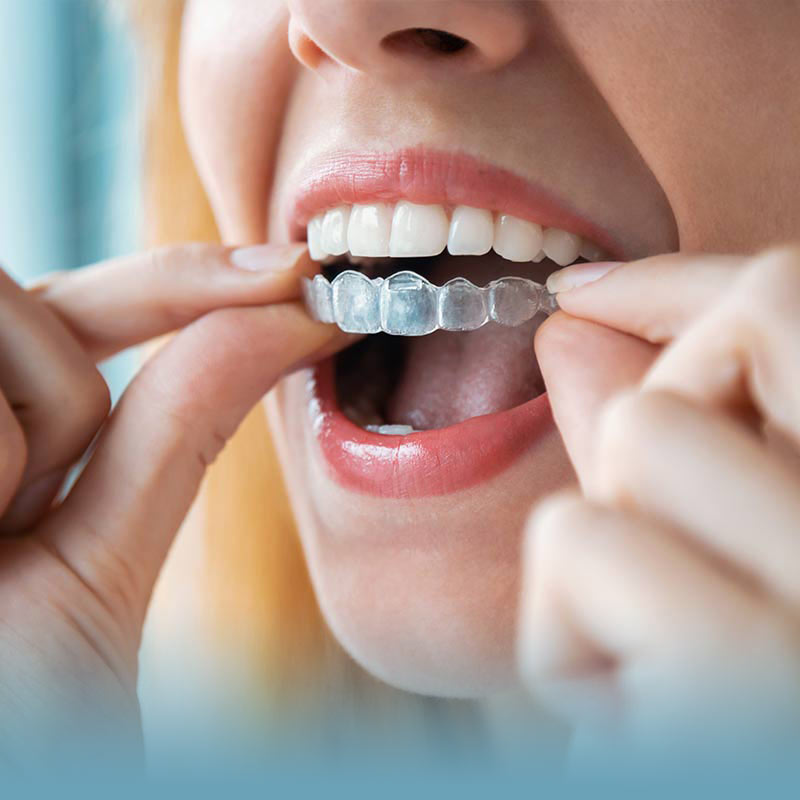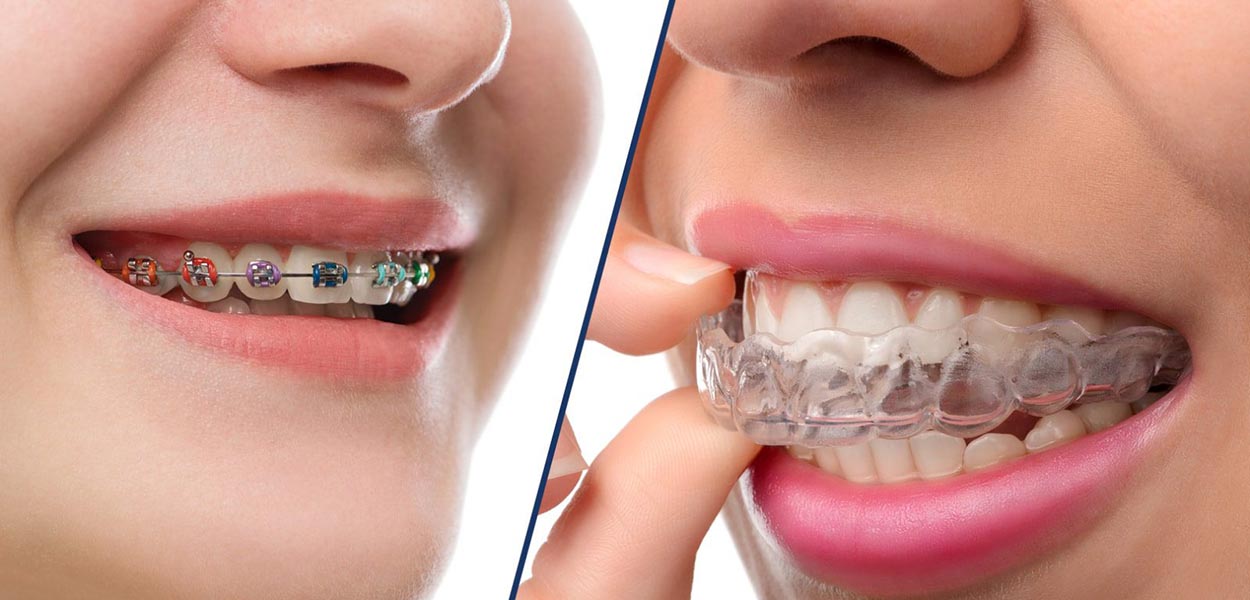How Invisalign Functions: Your Overview to Clear Aligners and Their Effectiveness
How Invisalign Functions: Your Overview to Clear Aligners and Their Effectiveness
Blog Article
Invisalign vs. Conventional Braces: Which Choice Is Right for You?
When considering orthodontic therapy, the selection in between Invisalign and conventional braces presents numerous crucial aspects that merit cautious assessment. Invisalign provides a discreet choice with detachable aligners, while traditional braces offer an extra visible yet efficient solution for severe imbalance.
Review of Therapy Choices

On the other hand, traditional braces include steel brackets and cables that are adhered to the teeth. This method applies constant pressure in time to accomplish placement. While efficient for complex orthodontic problems, traditional braces need routine brows through for modifications and can pose difficulties in keeping dental hygiene due to the problem of cleansing about cables and brackets.
Both choices have their qualities, and the choice often hinges on details oral problems, lifestyle preferences, and patient compliance. Eventually, consulting an orthodontic expert is vital for determining the most appropriate therapy plan tailored to private requirements. Comprehending the nuances of each option can considerably influence the general success of orthodontic therapy.
Aesthetic Considerations
A substantial aspect affecting the choice in between Invisalign and traditional braces is the aesthetic allure each treatment supplies. Invisalign aligners are crafted from clear plastic, making them basically unnoticeable when used.
On the other hand, conventional braces include metal brackets and wires, which can be much more obvious. While developments in orthodontic technology have actually led to the advancement of smaller brackets and colored elastics, conventional dental braces still keep an even more obvious account. For some individuals, the visibility of dental braces may hinder them from seeking essential treatment.
Inevitably, the choice in between Invisalign and conventional dental braces might hinge on personal choices relating to looks. Patients who focus on discernment frequently favor Invisalign, while those who are less worried concerning visibility may decide for traditional braces. Comprehending the visual implications of each option is vital for making an educated decision that aligns with one's way of living and preferences.
Comfort and Convenience

In regards to ease, Invisalign aligners are detachable, allowing patients to appreciate their favorite foods without constraint and maintain ideal dental hygiene. Cleaning and flossing are streamlined, as the aligners can be gotten during these regimens, whereas standard braces call for cautious maneuvering around wires and braces.
In contrast, traditional dental braces require regular adjustments, making them less practical for those with busy routines. Overall, the comfort and ease of Invisalign make it an appealing selection for many people seeking orthodontic treatment.
Therapy Period and Effectiveness
While both Invisalign and standard dental braces are effective in dealing with oral imbalances, the period of therapy can differ considerably in between both options. Typically, Invisalign therapy can take anywhere from 12 to 18 months, relying on the complexity of the case. The clear aligners function by progressively shifting teeth right into their desired positions, and routine follow-ups with an orthodontist aid make sure progression remains on the right track.
In contrast, standard dental braces commonly call for a longer commitment, typically varying from 18 months to 3 years. This results from their fixed nature and using cables and brackets, which can be extra reliable for intricate instances and extreme imbalances (Invisalign). The therapy effectiveness of conventional braces is well-documented, as they enable for exact changes and greater control over tooth movement
Inevitably, the selection between Invisalign and standard braces may hinge on both the awaited treatment period and like it the certain oral problems at hand. Consulting with an orthodontist is vital, as they can give customized recommendations based on specific demands, making certain the selected method aligns with wanted durations and results.
Cost Contrast and Insurance Policy Choices
Cost plays a substantial function in the decision-making process for people taking into consideration orthodontic therapy, whether selecting Invisalign or typical dental braces. Typically, the cost of Invisalign arrays from $3,000 to $8,000, while typical braces generally set you back between $2,000 and $6,000. Elements affecting these expenses include the complexity of the instance, the duration of treatment, and geographical area.
Insurance policy protection can considerably impact out-of-pocket expenditures. Several dental insurance strategies offer partial coverage for orthodontic therapies, but the specifics can differ widely. It is vital for clients to review their insurance policy policies to determine the level of protection for either option. Generally, typical braces might be much more often covered by insurance policy plans contrasted to Invisalign, which some insurance providers categorize as an aesthetic procedure.
Additionally, a number of orthodontic methods use adaptable settlement strategies, making both treatment options more available. Individuals ought to ask about prospective funding choices and discount rates for in advance repayments. Examining the overall expense, consisting of insurance coverage benefits and repayment plans, is vital for making a notified decision that aligns with both aesthetic preferences and spending plan factors to consider.

Conclusion
In summary, the choice between Invisalign and traditional braces pivots on numerous aspects, including aesthetic preferences, convenience, treatment duration, and cost. Invisalign supplies a very discreet, detachable choice that helps with oral health and nutritional adaptability, while standard braces might be preferable for complex oral concerns and usually come with a lower price factor. Ultimately, assessment with an orthodontist is important to evaluate specific circumstances and establish the most proper treatment choice for attaining ideal oral positioning.
When considering orthodontic therapy, the option in between Invisalign and typical braces offers a number of crucial elements that warrant cautious evaluation.Contrasting Invisalign and traditional dental braces exposes distinctive treatment alternatives check my blog for orthodontic adjustment.While both Invisalign and typical braces are reliable in fixing oral misalignments, the period of therapy click to read can vary significantly between the 2 options.Expense plays a significant function in the decision-making process for people taking into consideration orthodontic treatment, whether choosing for Invisalign or typical dental braces.In recap, the choice between Invisalign and conventional dental braces hinges on numerous factors, consisting of aesthetic preferences, comfort, therapy duration, and price.
Report this page